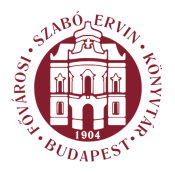Szablyár Péter: Sky-high - Our Budapest (Budapest, 2007)
Telecommunications and Data-transmission Towers
Aladár Edvi Illés. Due to its richly decorated street-front windows and neo-Baroque interior, the building became one of the best-known edifices of Budapest. The café in it was a major hub of the city's literary life. Of the sculptures destroyed during World War II and in 1956, when the whole building was badly damaged, a few (the allegories of Thrift, Wealth, America, and Hungary) were re-carved in 1957 (by Sándor Boldogfai Farkas, Ödön Methy and János Sóváry). Full-scale reconstruction was carried out to plans by the State Centre for the Reconstruction and Restoration of Historical Monuments and with exemplary circumspection by the Italian group Boscolo, who had purchased the building in 2001. In 2006, the group opened it as its new, 107-room luxury hotel called New York Palace. The graceful tower and two smaller turrets of the New York Palace are a magnificent sight wherever one approaches it from on the Great Boulevard. Up close, it is worth taking a good look at the details of the fafade from the imps holding spherical lamps to the huge clock. TELECOMMUNICATIONS AND DATA-TRANSMISSION TOWERS Visible from almost every point in the city - the Széchenyi Hill Television Transmitter Although decision to construct it was made in January of 1954, the transmission tower was not inaugurated before 22 January 1958. The 58-metre tall tower was topped with a 38-metre steel mast on which the butterfly aerials were attached. Balconies were attached to the upper storeys of the prismatic building, which accentuated the simple shape covered with limestone slabs (from Haraszti. Later it was to these balconies that the parabolic microwave aerials were fixed. The combined floor space of the levels, each measuring 8.3 metres by 20, was enough for the installation of a staircase, a lift and one or two operation rooms per floor. Designs were made by the architects of the company Uvaterv - for the tower building by László Székely and for the steel structure by Imre Verő; the static analysis was the work of József Puchard. The building and its environs are decorated by three works of art — László 51
